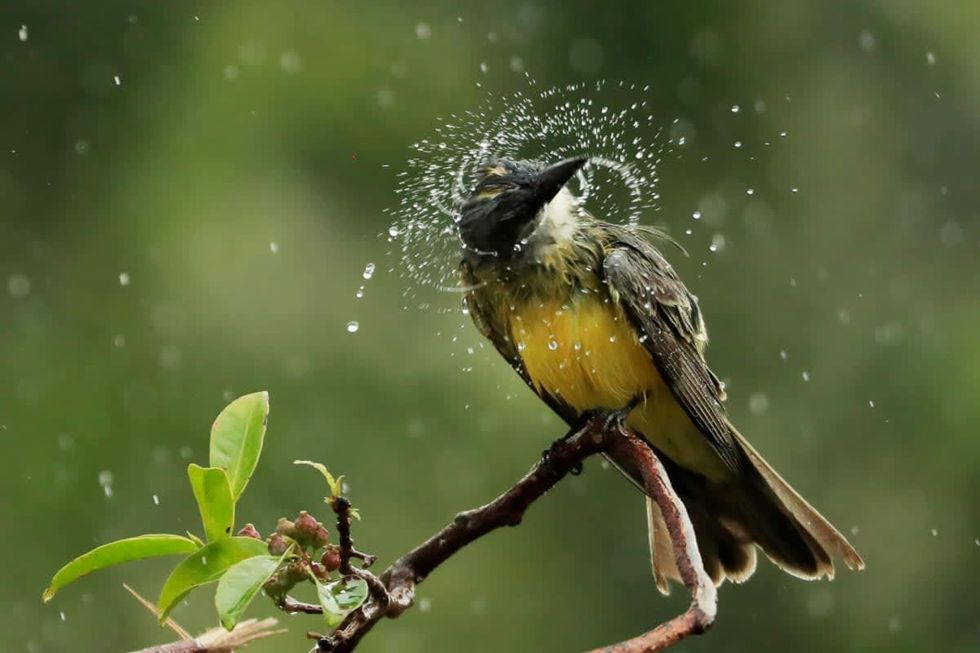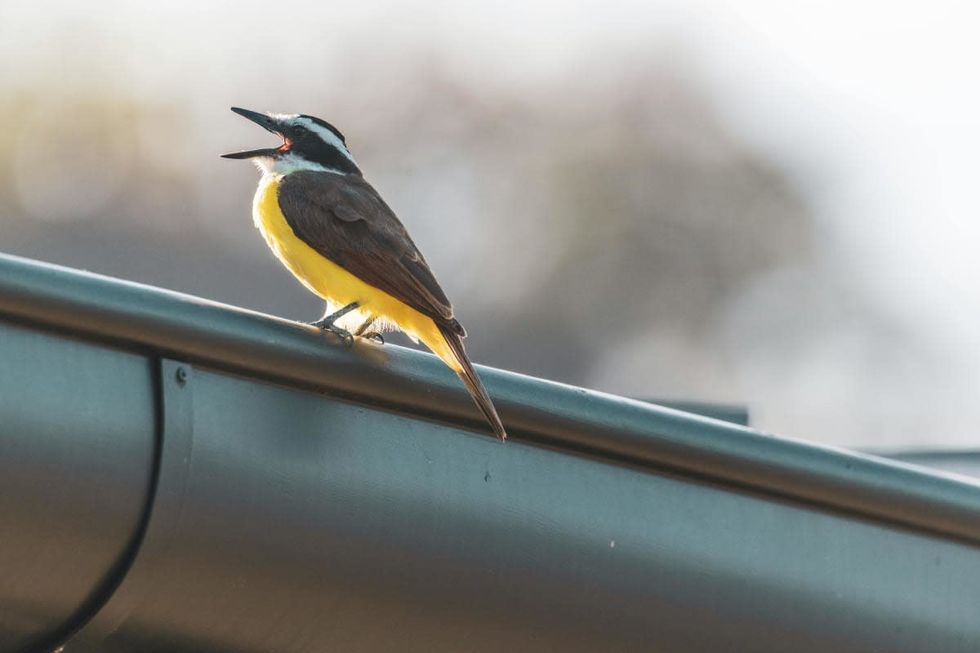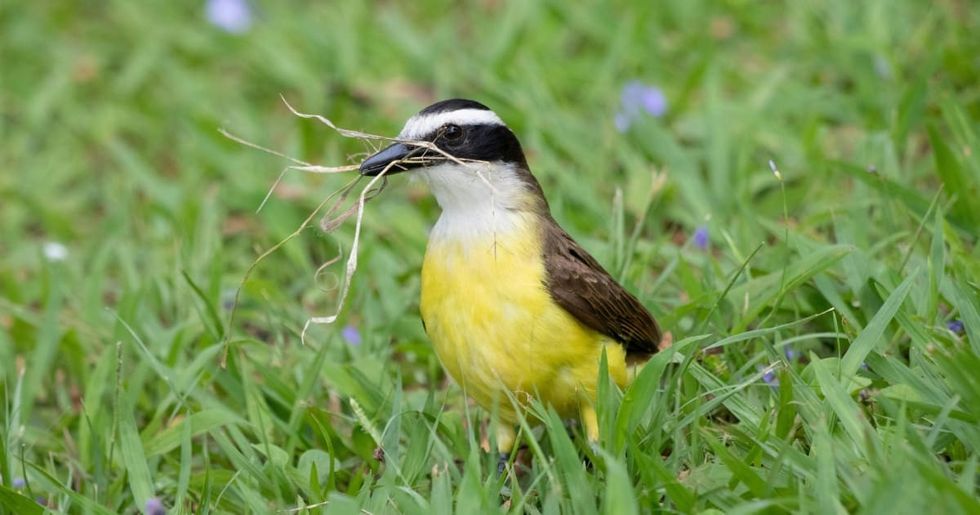Humans have more in common with other species than we'd like to think. We are social like dolphins, communicative like apes, nurturing like elephants and much more. A recent study by the University of Buenos Aires, published in the journal Chaos, sheds light on a trait we share with birds.

Even when asleep, birds' brains fire electrical signals like those that occur while awake. For the first time, a study has managed to translate birds’ sleeping muscle activity into sound. The findings of this unique research have given new insights into the avian brain and at the same time, given us clues to what birds might dream about as they go off to sleep, as reported by Smithsonian Magazine.
This research was conducted on two great kiskadees. These small, brightly colored flycatchers live in South America, Central America, and parts of Mexico and Texas. The birds have vibrant yellow feathers covering their bellies, brownish-orange wings, and black-and-white spots on their faces.

The experiment required capturing two birds as the scientists needed to surgically implant electrodes to record their muscle activity while they were sleeping and awake. After multiple rounds, they recorded about 100 instances of muscle activity associated with singing.
Interestingly, one of the synthetic songs they produced matched the noises kiskadees make when fighting over territory. However, scientists looked at video footage of the sleeping bird and found that the bird's head feathers were standing on end—just like they would during a fight.

Gabriel Mindlin, co-author of this study and biophysicist at the University of Buenos Aires, said, "It’s possible the bird was having a bad dream." He added, "You could figure out this guy was experiencing a nightmare probably, recreating the whole experience of fighting his sleep." It is pertinent to note that animals dream differently than humans. Even after capturing sounds from the birds, it’s difficult for scientists to prove the birds were experiencing dreams because they lack language and self-awareness. However, the study suggests something is going on inside the minds of avian creatures.

Dr. Mindlin talked about why the research was based around great kiskadees as he said, "For this initial work, we chose the great kiskadee (Pitangus sulphuratus), a member of the flycatcher family and a species for which we’d recently discovered its physical mechanisms of singing, and presented some simplifications," per Sci News. In the past, there have been similar experiments that involved studying the sounds of sleeping birds. Previous research has found sleeping pigeons experience brain activity in regions linked to visual processing and signals from the wings which subtly indicates that common city birds might dream of flight.

Dr. Mindlin expressed that "dreams are one of the most intimate and elusive parts of our existence" and to know that we share this with "such a distant species is very moving," per AIP Publishing.












 Representative Image Source: Pexels | Anni Roenkae
Representative Image Source: Pexels | Anni Roenkae Representative Image Source: Pexels | Its MSVR
Representative Image Source: Pexels | Its MSVR Representative Image Source: Pexels | Lucian Photography
Representative Image Source: Pexels | Lucian Photography

 Representative Image Source: Pexels | francesco ungaro
Representative Image Source: Pexels | francesco ungaro Representative Image Source: Pexels | parfait fongang
Representative Image Source: Pexels | parfait fongang Image Source: YouTube |
Image Source: YouTube |  Image Source: YouTube |
Image Source: YouTube |  Image Source: YouTube |
Image Source: YouTube | 
 Representative Image Source: Pexels | Hugo Sykes
Representative Image Source: Pexels | Hugo Sykes Representative Image Source: Sectional view of the Earth, showing central fire and underground canals linked to oceans, 1665. From Mundus Subterraneous by Athanasius Kircher. (Photo by Oxford Science Archive/Print Collector/Getty Images)
Representative Image Source: Sectional view of the Earth, showing central fire and underground canals linked to oceans, 1665. From Mundus Subterraneous by Athanasius Kircher. (Photo by Oxford Science Archive/Print Collector/Getty Images) Representative Image Source: Pexels | NASA
Representative Image Source: Pexels | NASA




 Representative Image Source: Pexels | Steve Johnson
Representative Image Source: Pexels | Steve Johnson Representative Image Source: Pexels | RDNE Stock Project
Representative Image Source: Pexels | RDNE Stock Project Representative Image Source: Pexels | Mali Maeder
Representative Image Source: Pexels | Mali Maeder
 Photo: Craig Mack
Photo: Craig Mack Photo: Craig Mack
Photo: Craig Mack
 Representative Image Source: Pexels | Kellie Churchman
Representative Image Source: Pexels | Kellie Churchman Representative Image Source: Footprints of a long-neck dinosaur (Diplodocus), found in a quarry in Germany. (Photo by Alexander Koerner/Getty Images)
Representative Image Source: Footprints of a long-neck dinosaur (Diplodocus), found in a quarry in Germany. (Photo by Alexander Koerner/Getty Images) Representative Image Source: Painting from a series by Ernest Untermann in the museum at Dinosaur National Monument, Utah.
Representative Image Source: Painting from a series by Ernest Untermann in the museum at Dinosaur National Monument, Utah. Representative Image Source: VARIOUS DINOSAURS IN GOBI DESERT. (Photo by H. Armstrong Roberts/ClassicStock/Getty Images)
Representative Image Source: VARIOUS DINOSAURS IN GOBI DESERT. (Photo by H. Armstrong Roberts/ClassicStock/Getty Images)
TikTok shocked by 15-year-old unhinged viral clip of kids performing Scarface in school play